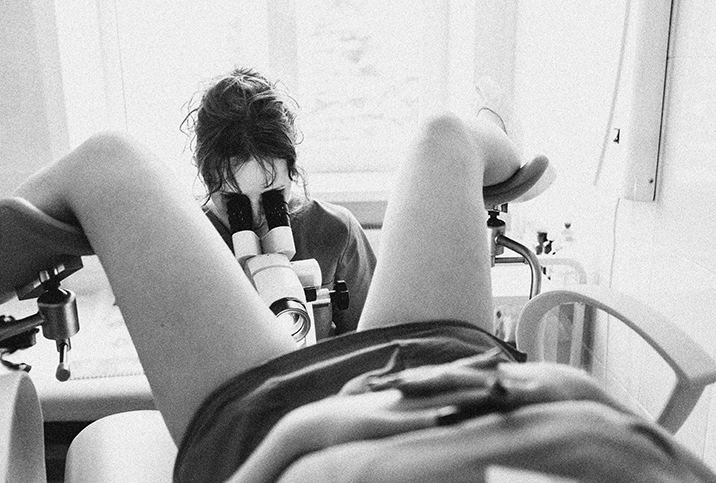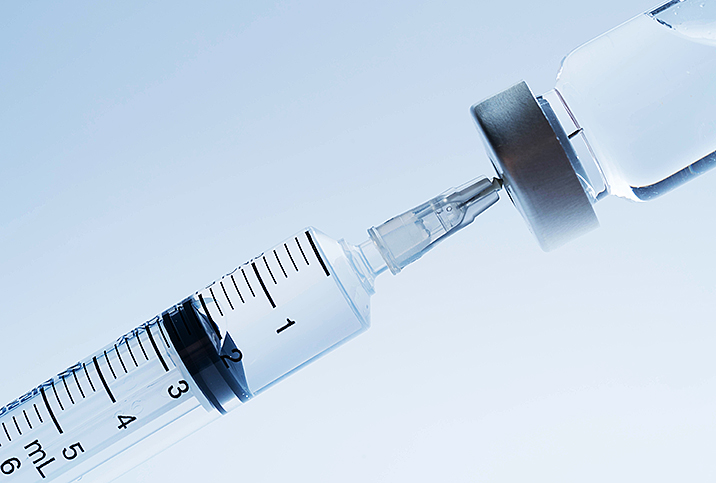Don't Skip Your Cervical Biopsy

When it comes to a Pap smear, most people with a uterus know the drill: Put on the flimsy paper gown, situate your feet in the stirrups and slide your butt to the edge of the table.
But what if your Pap comes back as abnormal and your OB-GYN says you need to have a cervical biopsy? First, take a deep breath. Cervical biopsies are pretty common. For many people who have tested positive for the human papillomavirus (HPV), which affects 80 percent of sexually active people at some point, a cervical biopsy is a procedure they'll probably need to have.
So, what exactly is a cervical biopsy, and is it painful? How do you prepare for one? Here's what you need to know about this important procedure.
What is a cervical biopsy?
A cervical biopsy is a surgical procedure in which your doctor retrieves a small amount of tissue from your cervix. Your cervix is the tube-shaped lower part of your uterus that opens into your vagina. A cervical biopsy may be done as part of a colposcopy, which uses an instrument with a special lens to look at your cervical tissue.
This procedure will generally be recommended if your Pap test or pelvic exam revealed abnormalities. These abnormalities can include HPV or precancerous cells. You may also undergo this procedure to treat polyps or genital warts.
There are three types of cervical biopsies:
- Punch biopsy: During this procedure, small tissue samples will be collected from your cervix with biopsy forceps. The doctor may stain your cervix with dye to help them see any potential abnormalities.
- Cone biopsy: Your OB-GYN will use a laser or scalpel to remove a large, cone-shaped piece of tissue.
- Endocervical curettage (ECC): In this procedure, cells will be removed from the endocervical canal with a handheld instrument.
How to prepare for your cervical biopsy
Schedule your biopsy for a week when you're not on your period. Avoid having vaginal sex or using tampons or douches for at least 24 hours prior to your procedure. Avoid using alcohol or medications that could increase your risk of bleeding, such as warfarin, aspirin and ibuprofen.
If you are having a cervical biopsy that requires general anesthesia, such as a cone biopsy, fast for at least eight hours prior to the procedure. Have a trusted friend or relative drive you home after the biopsy.
What to expect during the procedure
The entire procedure will take about 15 minutes. You'll sit with your legs in the stirrups, just like in a routine pelvic exam. Your doctor may or may not numb the area. Then they'll insert a speculum into your vagina and wash your cervix with a vinegar-and-water solution to highlight any abnormal areas.
The OB-GYN will remove the tissue sample with a curette, forceps or a scalpel. You may experience cramping, similar to menstrual cramps, when the tissue is collected. The procedure is usually described as uncomfortable but not painful.
After the procedure
You may experience some light spotting, so the doctor will provide you with a panty liner. Mild cramping can occur following the cervical biopsy. It's recommended you take the day off, if possible, and avoid strenuous activities, such as heavy lifting. Avoid tampons, douching and vaginal intercourse for a week to lower your risk of infection.
Call your doctor if you experience severe pain or heavy bleeding, develop a fever or have a foul-smelling discharge.
Your biopsy results should come back within a week or two. During this waiting period, try to stay calm and don't overthink the issue. Once your results are ready, your doctor will recommend a course of treatment depending on what they find.
An important preventive procedure
Cervical biopsies help your doctor find and treat precancerous cells before they can turn into cancer. As scary as a cervical biopsy might seem, it's a helpful procedure to prevent cervical cancer.
If it's been recommended you undergo a cervical biopsy, don't put off or skip the procedure. While it can be uncomfortable, it is not painful and can prevent bigger problems from occurring.

















